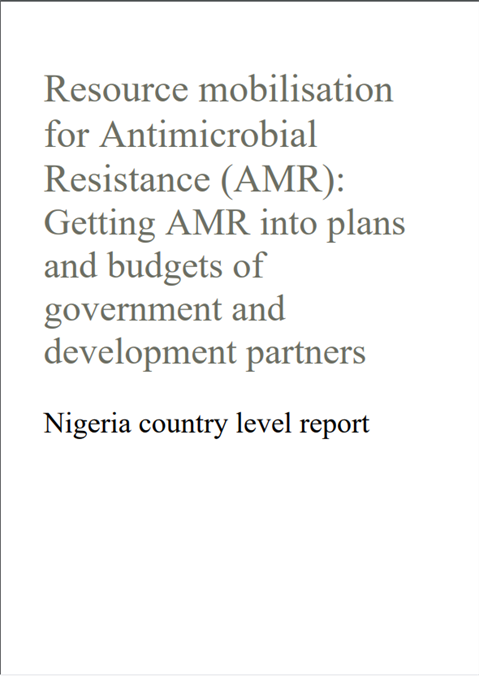Nigeria country level report: Resource mobilisation for antimicrobial resistance (AMR)
Getting AMR into plans and budgets of government and development partners

Overview
Antimicrobial resistance (AMR) is now widely accepted as a global health threat. Despite this, and good analyses of the impact and cost implications of AMR on long-term development undertaken by the World Bank and the independent review on AMR by Jim O Neill, AMR is still not seen as a mainstream development issue. AMR containment cannot be seen as a transient project, but will require sustained investment over decades. Ideally, all the key elements should be incorporated into government budgets, but this takes time, and many countries, particularly low-income countries with limited resources, are still very reliant upon funding from donor projects and international development agencies. To leverage resources, AMR needs to be incorporated into existing programmes, as well as built into future programmes, national policies and budgets.
Three country case studies were commissioned by the WHO AMR Secretariat - in Ghana, Nepal and Nigeria - to assist teams working on AMR to explore the scope to scale up delivery of AMR activities through existing programmes and projects and those that are under development. The Centre for Disease Dynamics, Economics & Policy (CDDEP) was contracted by WHO to develop the case studies. A One Health approach was taken, to assess entry points for AMR activities, as human and animal health are interdependent and bound to the health of the environments in which they are situated. Also considered was the role of, and opportunities to engage with, development partners on AMR within country.
The case studies reviewed the scope for scaling up action related to AMR through existing and future projects and programmes. The information gained from this piece of work enabled a greater understanding of the challenges and options for seeking investment in AMR in developing countries and informed the development of "Turning plans into action for antimicrobial resistance working paper 2.0: Implementation and coordination”.
